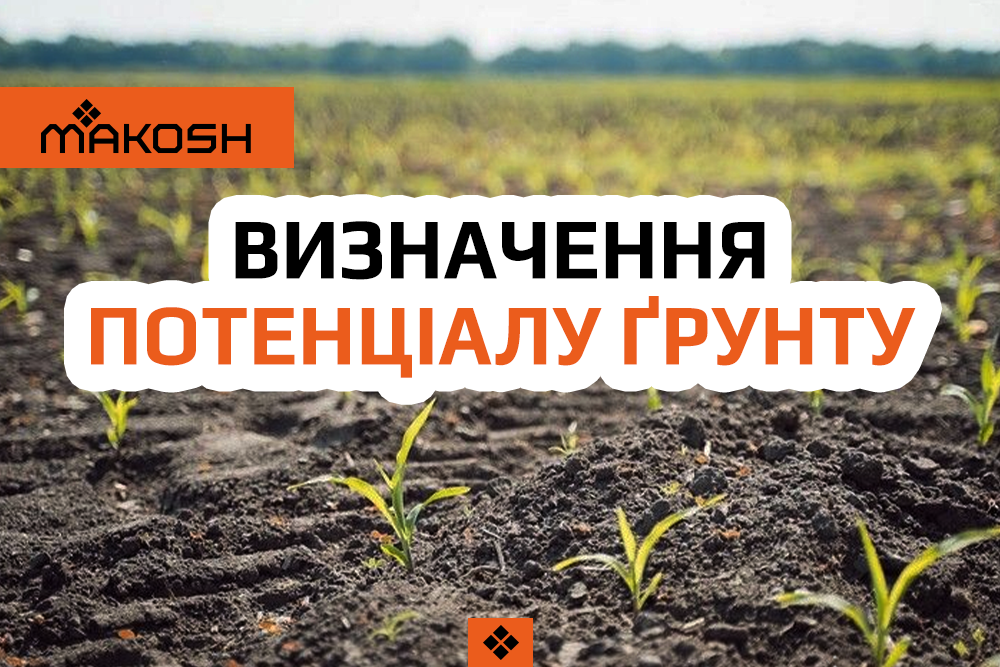No products in the cart.
Enhancing the frost resistance of fruit and berry crops and their preparation for wintering
Soil is not just a medium for plant growth; it is a living system whose condition directly affects the productivity and sustainability of agricultural production. The potential of the soil determines how effectively a plant can utilize its genetic potential. Understanding soil properties allows one to forecast yields, optimize crop structure, and apply fertilizers rationally.
Soil potential is the ability of soil to provide plants with all the essential elements of life — water, air, and nutrients — combining its physical, chemical, and biological properties.
Essentially, soil potential can be understood as the maximum yield that can be achieved under optimal management conditions — i.e., with appropriate fertilization, moisture, tillage, and crop rotation.
There are three levels of soil potential:
Natural potential — determined by soil type, climate, topography, and the genetic structure of the soil profile.
Effective potential — the portion of natural potential realized through agronomic practices (fertilization, irrigation, land reclamation).
Economic potential — the level to which yield can be increased without reducing the profitability of production.
Thus, assessing field potential is the first step in systematically planning fertilizer application and technological decisions aimed at achieving stable yields.
Organic Matter (Humus)
Organic matter or humus is the foundation of soil fertility. It forms the physical structure, provides porosity, retains moisture, serves as a source of nutrients (nitrogen, phosphorus, sulfur), and sustains microbial life.
According to Ukrainian and European studies, each 1% of humus in the topsoil enables the soil to retain up to 80–100 m³ of additional moisture per hectare, which is especially important in steppe and arid regions.
Moreover, organic matter participates in cation exchange, keeping nutrient ions in an available form. A high humus content enhances phosphorus and potassium uptake and reduces nitrogen leaching. A decline in organic matter leads to structural degradation, compaction, reduced water permeability, and yield loss.
Soil pH
Soil pH is a key factor in nutrient availability. In overly acidic soils (pH < 5.5), the availability of phosphorus, calcium, magnesium, and boron is blocked, while the mobility of toxic aluminum and manganese forms increases. At high pH levels (> 7.5), the uptake of iron, copper, zinc, and manganese is reduced.
For most field crops, the optimal pH range is 6.0–7.5. In the Polissia and northern forest-steppe zones, soils are predominantly acidic and require liming (CaCO₃ or dolomitic lime). In southern steppe zones, alkaline and saline soils are common, where soil structure can be improved through gypsum application or organic amendments.
Practical experience shows that even a small pH correction of 0.5–1.0 units can increase phosphorus uptake by 30–40% and raise grain yield by 10–15%.
Cation Exchange Capacity (CEC)
CEC is an indicator of the soil’s ability to retain positively charged ions (Ca²⁺, Mg²⁺, K⁺, NH₄⁺) and make them available to plants.
The higher the CEC, the greater the buffering capacity of the soil — its ability to resist nutrient leaching and sharp changes in acidity.
High CEC values are typical for chernozem and clay soils (20–40 meq/100 g), medium for loamy soils (10–20), and low for sandy soils (5–10).
In soils with low CEC, fertilizers should be applied in split or localized doses to minimize nutrient losses.
The base saturation ratio — the proportion of calcium, magnesium, and potassium among all cations in the soil exchange complex — is also crucial. When this value falls below 60–70%, soil structural stability decreases, acidity rises, and nutrient availability drops.
Soil fertility depends not only on CEC but also on the concentration of major nutrients such as nitrogen, phosphorus, and potassium, as well as micronutrients like boron, zinc, manganese, and copper. A deficiency of even one of these components can cause a 15–25% loss of potential yield.
Beyond basic agrochemical parameters, soil fertility potential is strongly influenced by soil texture and climatic conditions.
Soil texture affects water-holding capacity, aeration, and overall soil quality. Sandy soils are easy to cultivate but lose moisture quickly; clay soils are nutrient-rich but difficult to manage. The ideal type is a medium loam soil that provides a balanced water and air regime.
Climatic features also have a significant impact on water availability and the rate of organic matter mineralization. In the steppe zone, water deficit is the main limiting factor; in the forest-steppe, the balance between nitrogen and phosphorus is crucial; and in the Polissia zone, acidity and excessive moisture are key concerns.
Therefore, to accurately determine field productivity potential, it is necessary to consider the specific climatic characteristics of each region.
Modern soil potential assessment is impossible without the use of digital monitoring tools, such as:
NDVI maps (Normalized Difference Vegetation Index) — showing photosynthetic activity and biomass intensity, helping to identify field zones with lower fertility potential or nutrient deficiencies.
Yield maps — based on data from harvesters or sensors, illustrating the actual distribution of productivity across the field.
Analyzing these maps in combination with agrochemical soil tests allows for evaluating not only the current condition but also the dynamics of soil potential — identifying areas that require fertilization adjustments and those where resources are already optimized.
To accurately evaluate your field’s potential, it is recommended to order a Soil Audit from Makosh. This service includes professional analysis of organic matter content, pH level, CEC, and macro- and micronutrient reserves, along with specific recommendations for improving soil fertility.
Such a comprehensive approach helps identify weaknesses in the soil system, optimize nutrient management, and ensure stable yields even under changing climate conditions.

